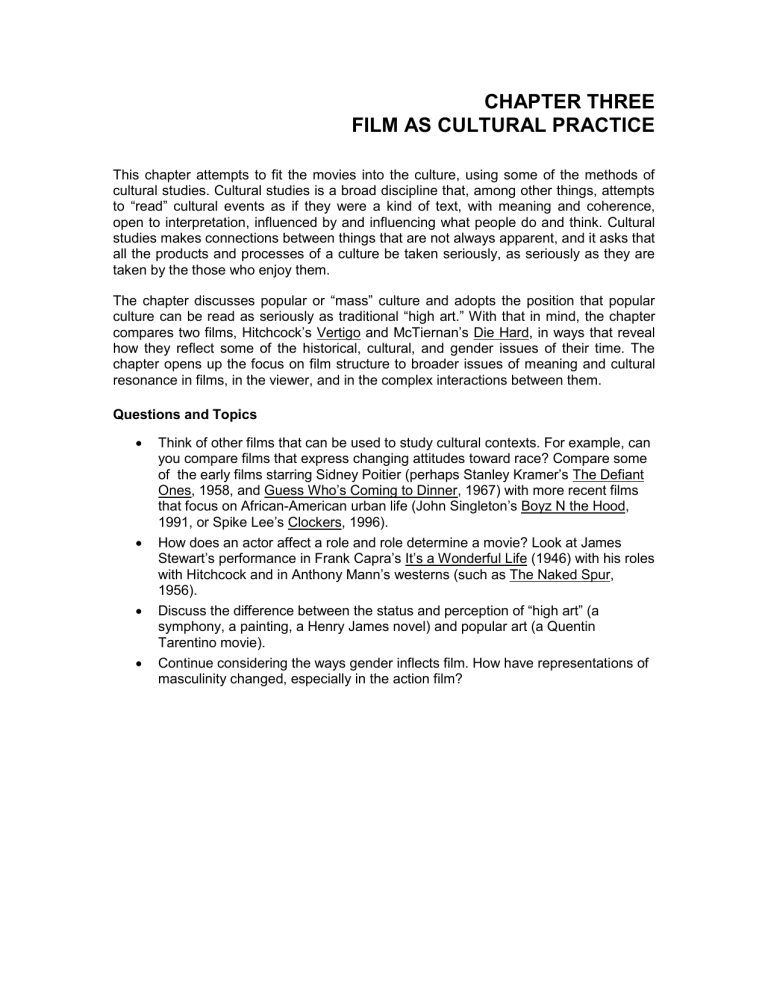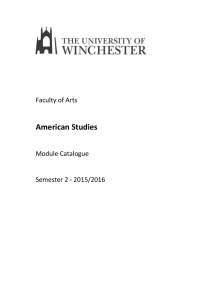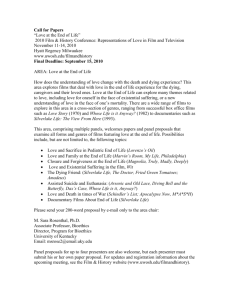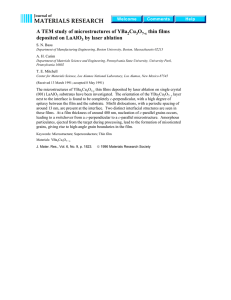CHAPTER THREE

CHAPTER THREE
FILM AS CULTURAL PRACTICE
This chapter attempts to fit the movies into the culture, using some of the methods of cultural studies. Cultural studies is a broad discipline that, among other things, attempts to “read” cultural events as if they were a kind of text, with meaning and coherence, open to interpretation, influenced by and influencing what people do and think. Cultural studies makes connections between things that are not always apparent, and it asks that all the products and processes of a culture be taken seriously, as seriously as they are taken by the those who enjoy them.
The chapter discusses popular or “mass” culture and adopts the position that popular culture can be read as seriously as traditional “high art.” With that in mind, the chapter compares two films, Hitchcock’s Vertigo and McTiernan’s Die Hard, in ways that reveal how they reflect some of the historical, cultural, and gender issues of their time. The chapter opens up the focus on film structure to broader issues of meaning and cultural resonance in films, in the viewer, and in the complex interactions between them.
Questions and Topics
Think of other films that can be used to study cultural contexts. For example, can you compare films that express changing attitudes toward race? Compare some of the early films starring Sidney Poitier (perhaps Stanley Kramer’s The Defiant
Ones, 1958, and Guess Who’s Coming to Dinner, 1967) with more recent films that focus on AfricanAmerican urban life (John Singleton’s Boyz N the Hood,
1991, or Spike Lee’s Clockers, 1996).
How does an actor affect a role and role determine a movie? Look at James
Stewart’s performance in Frank Capra’s It’s a Wonderful Life (1946) with his roles with Hitchcock and in Anthony Mann’s westerns (such as The Naked Spur,
1956).
Discuss the difference between the status and perception of “high art” (a symphony, a painting, a Henry James novel) and popular art (a Quentin
Tarentino movie).
Continue considering the ways gender inflects film. How have representations of masculinity changed, especially in the action film?











